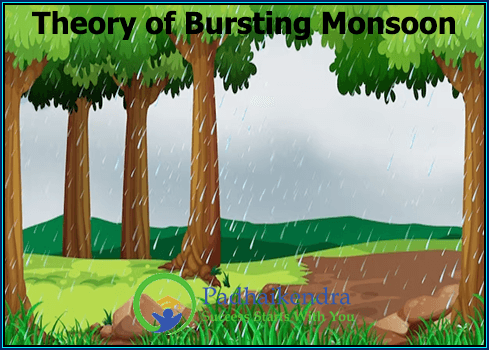The theory of bursting monsoon is a phenomenon associated with the onset of the Indian monsoon, which is characterized by the sudden and rapid increase in rainfall over a short period of time. The onset of the monsoon is typically preceded by a prolonged dry spell, during which the land and vegetation become dry and parched.
According to the theory, the onset of the monsoon is triggered by the arrival of the monsoon winds, which are driven by the pressure gradient between the Indian Ocean and the Tibetan Plateau. As the monsoon winds move towards the Indian subcontinent, they interact with the warm and moist air over the Arabian Sea and Bay of Bengal, which leads to the formation of convective clouds.
These clouds, in turn, produce rainfall over the subcontinent, which gradually spreads over larger areas as the monsoon progresses. However, during the initial stages of the monsoon, the rainfall is often localized and sporadic, and may occur in the form of heavy showers or thunderstorms.
The bursting of the monsoon refers to the sudden and intense onset of rainfall over a large area, which typically occurs after a prolonged dry spell. This sudden increase in rainfall is attributed to the convergence of the monsoon winds and the moisture-laden air over the Arabian Sea and Bay of Bengal, which leads to the formation of large convective clouds that produce heavy rainfall.
The theory of bursting monsoon is important for understanding the dynamics of the Indian monsoon, as it helps to explain the sudden and intense onset of rainfall over the subcontinent. It also highlights the importance of accurate weather forecasting and early warning systems, as heavy rainfall during the monsoon season can often lead to floods, landslides, and other natural disasters that can have significant impacts on human and environmental systems.





